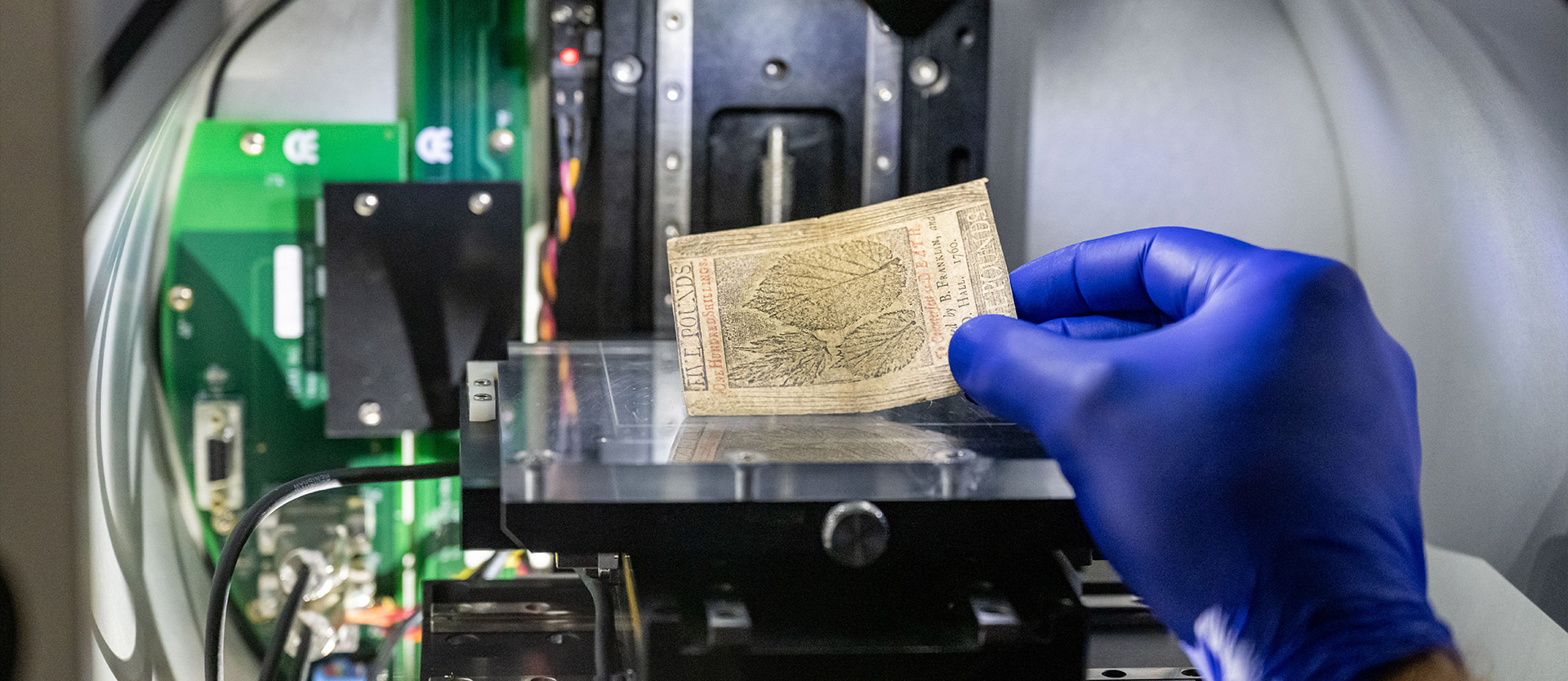
Silk against counterfeiters
The art of counterfeiting money is as old as money itself. When paper money was first introduced in the USA, counterfeiters sensed their chances. But they were wrong.

The team, led by Prof. Khachatur Manukyan of the University of Notre Dame, analyzed nearly 600 banknotes from the colonial era. The colonial banknotes span a period of 80 years. They include bills printed by Franklin's network of printers as well as counterfeits. "Producing money for the fledgling monetary system was important to Franklin not only as a printer but also as a statesman," explains Khachatur Manukyan. One problem stood in the way of efforts to print paper money: counterfeiting. When Franklin opened his printing press in 1728, paper money was a new concept. In colonial times, there were no standardized bills. This gave fraudsters the opportunity to pass off counterfeit bills as real ones. So Franklin tinkered with incorporating security features that made his bills distinctive.
Prof. Manukyan and his team determined the chemical elements used in the banknotes.
"To ensure the reliability of the bills, Franklin had to stay one step ahead of the counterfeiters," Manukyan said. "Unfortunately, the records that captured these printing methods have been lost," he laments. Manukyan and his team used spectroscopic and imaging techniques to get an accurate look at the ink, paper and fibers that made Franklin's bills difficult to copy.
Manukyan and his team determined the chemical elements used in the banknotes. They found that the counterfeits contained high amounts of calcium and phosphorus, while these elements were found only in trace amounts in the genuine bills. Their analyses revealed that Franklin used a special black pigment made of graphite for the printed bills. This pigment is different from the "bone black" made from burnt bone that was favored by counterfeiters.
Their analyses revealed that Franklin used a special black pigment made of graphite for the printed bills. This pigment is different from the "bone black" made from burnt bone that was favored by counterfeiters.
Another innovation was found in paper. The invention of including tiny fibers in the paper pulp, visible as pigmented squiggles in the paper money, is often attributed to paper manufacturer Zenas Marshall Crane, who introduced the practice in 1844. However, Manukyan and his team found evidence that Franklin incorporated colored silks into his paper much earlier.
The team also discovered that the banknotes printed by Franklin's network acquired a special appearance through the addition of a translucent material. The researchers found that Franklin added muscovite to his papers, and that the size of these muscovite crystals in the paper increased over time. The researchers suspect that Franklin initially added muscovite to make the printed bills more durable, but continued to use it when it proved helpful in deterring counterfeiters.
Original publication:
Khachatur Manukyan et al.
Multiscale analysis of Benjamin Franklin’s innovations in American paper money
APPLIED PHYSICAL SCIENCES, July 17, 2023
doi.org/10.1073/pnas.2301856120









